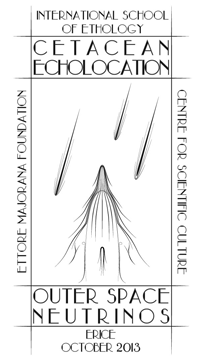Speaker
Herve Glotin
(Toulon Univ., F)
Description
First we present our real-time multiple whale tracking on large or short hydrophones array. Our
algorithm is based on the transitivity of the Time Delay of Arrival (TDOA) computed from
correlation of each couple of hydrophones [Glotin et al. 2008, 2009, patent USA,EU]. It results a
high precision track without false alarm (online demonstrations at
http://www.youtube.com/watch?v=0Szo3gdiTRk, http://sabiod.org/tv : real fine tracking results
computed on the widely spaced hydrophones of DCL 2005 Monaco challenge, record from
Bahamas AUTEC). The TDOAs were computed after Teager-Kaiser or Stochastic Matching Filter
which was more efficient [Benard 2010, 2011]. The shape of the track demonstrates some
interesting observation and predation behaviours of the whale. Second we show that our algorithm
is compatible with short spaced hydrophones base (2 meters square) as demonstrated using the
Nemo Onde data (from INFN, CIBRA and the NEMO, data distributed within the 2009 DCL
challenge by G. Pavan). In this purpose we firstly detect each click on each channel. A first static
method consists in computing the position of each target, relative to the platform, using directly
TDOA estimates, resolving the acoustic model with a maximum likelihood estimator for example. In
parallel, we proposed a more dynamic tracking system base on particle filtering in presence of
false alarms and an unknown and varying number of targets. This takes into account the problem
of data association and is called the Rao-Blackwellized Monte Carlo data association (RBMCDA)
algorithm. Thus, we trajectography the whales and we can increase the state dimension to
estimate other features such as speed. We compute the Cramér-Rao Lower Bound (CRLB) for the
given array geometry and the confidence ellipses. This method allows us to locate several sperm
whales with a reasonable accuracy [Benard and al. 2011]. This method opens new perspectives
for compact military or civil whale monitoring and various behavior feature extractions. Third we
show how sparse coding allow efficient TDOA estimation without knowledge on the pattern of the
target. We demonstrate simple cosine metrics results on couple of hydrophone of the Mink whale
data set (Hawaii) distributed at DCL 2011, and we discuss on the advantages of this approach for
scaled tracking methods (Glotin with Razik, ASA ICA Montreal proceeding 2013).
This work was supported by the inter-institute MASTODONS CNRS project Scaled Acoustic
Biodiversity http://sabiod.org & Institut Universitaire de France. Universitaire de France.

